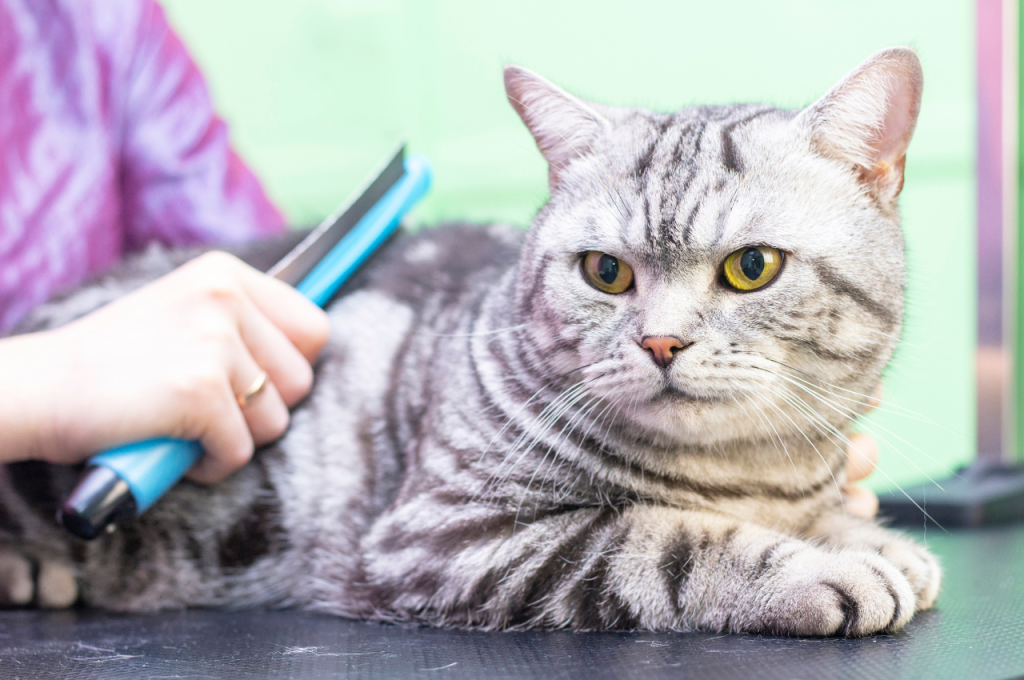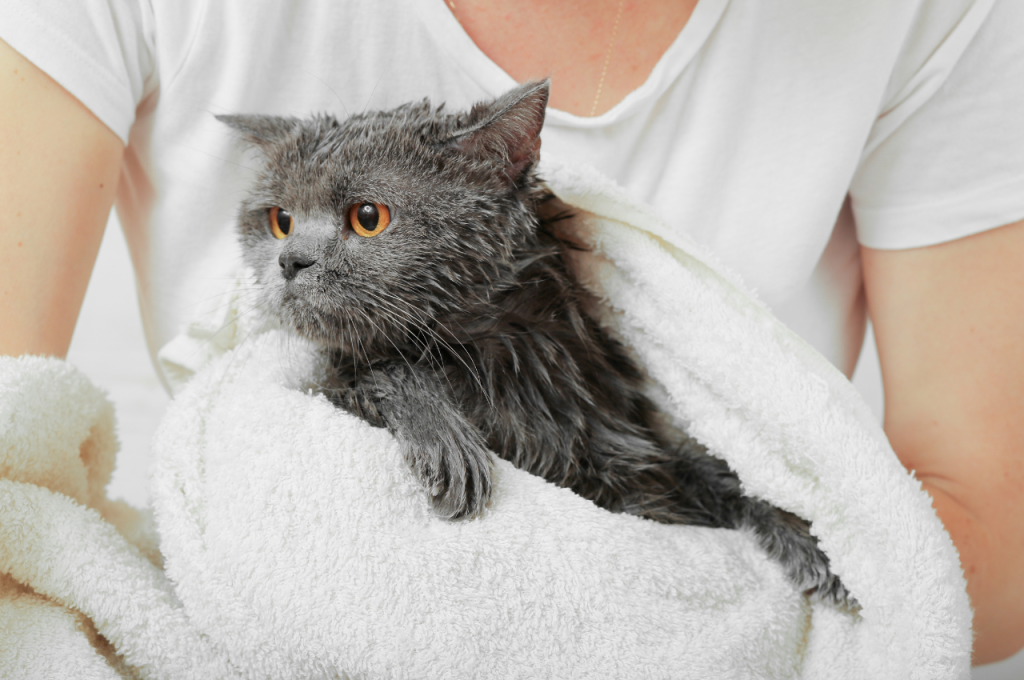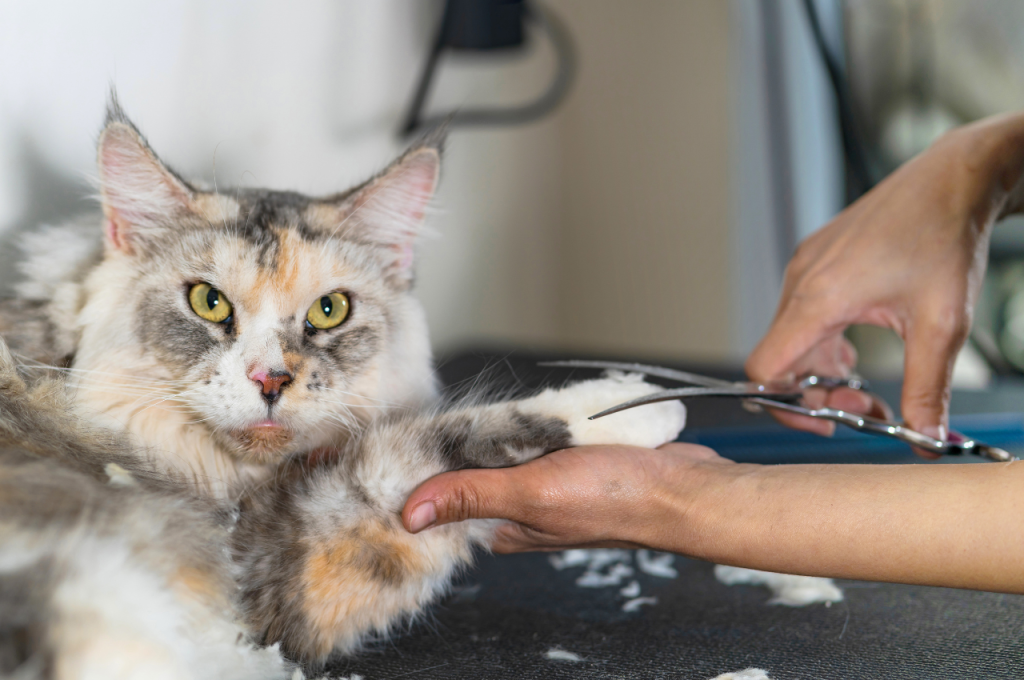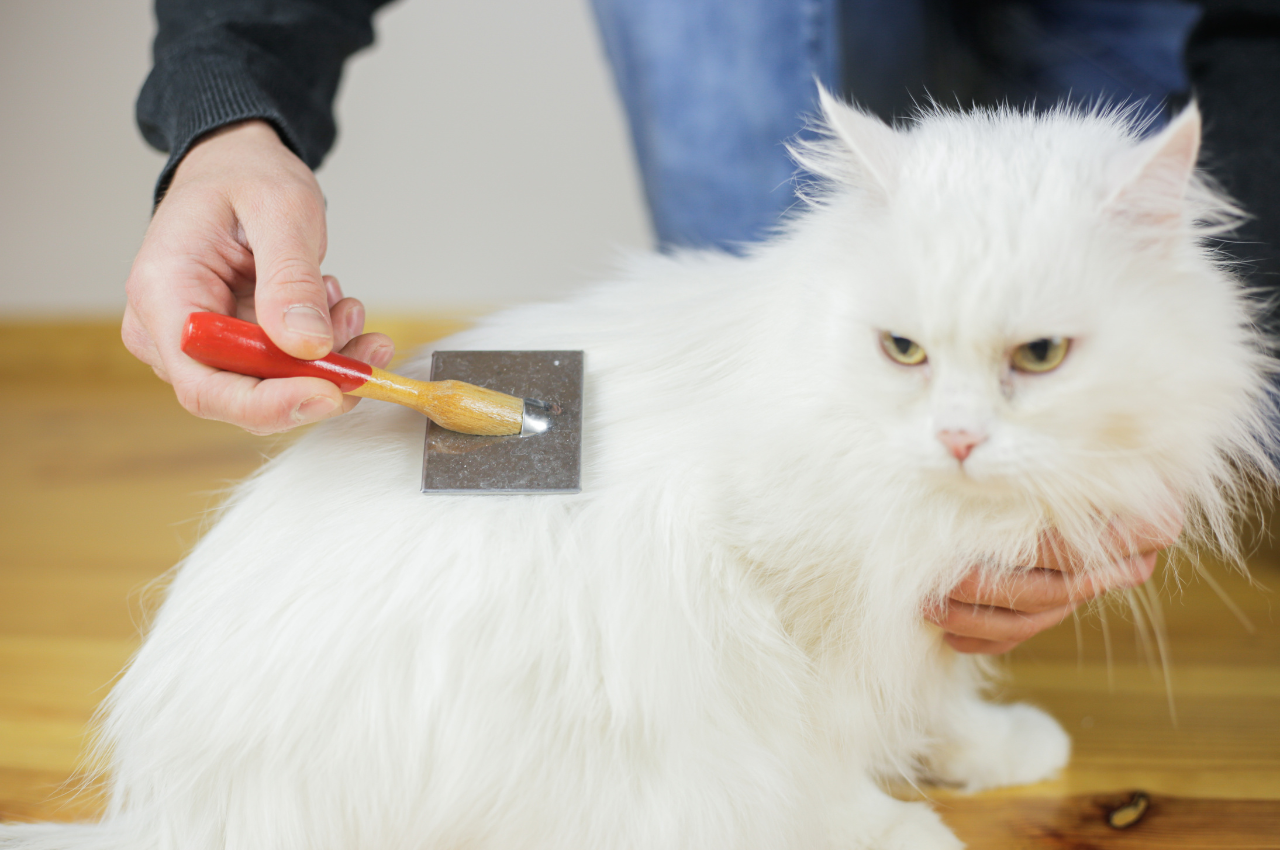To clean cat hair, use a vacuum with a pet hair attachment and groom your cat regularly. Cat hair can be removed easily with proper cleaning techniques.
Keeping your home clean will reduce the amount of cat hair floating around and minimize allergies triggered by cat dander. Using lint rollers and rubber gloves can also help in quickly cleaning cat hair off furniture and clothing. Additionally, washing your cat’s bedding frequently and using an air purifier can further help in managing cat hair buildup in your home.
By incorporating these cleaning practices into your routine, you can effectively keep your home free from excessive cat hair.
Understanding Cat Hair
Cat hair is a common issue that many pet owners face, especially those with long-haired feline companions. Understanding the nature of cat hair and knowing how to effectively clean it is essential for maintaining a clean and hair-free home environment.

Types of Cat Hair
- Guard hairs: Long, stiff hairs that form the outer coat of a cat
- Awn hairs: Intermediate in length and provide insulation
- Down hairs: Short, soft hairs close to the skin
Why Cat Hair Can Be a Problem
- Can cause allergies in humans
- Can accumulate on furniture and clothing
- Can clog vacuum filters and air vents
Preparing for Pet Hair Removal
Cleaning up cat hair efficiently requires specific tools for the job.
- Vacuum cleaner: A powerful one with attachments for upholstery and carpets.
- Lint roller: Handy for quick removal from clothing and furniture.
- Rubber gloves: Used damp to gather hair from surfaces.
Establishing a regular cleaning schedule helps maintain a hair-free home.
- Vacuum daily: Focus on areas where your cat spends the most time.
- Brush your cat: Regular grooming reduces shedding and prevents excessive hair around the house.
- Use furniture covers: Protect your furniture from cat hair buildup.
Cleaning Cat Hair From Furniture
Keeping your furniture free from cat hair can be a daunting task, especially if your feline friend loves to snuggle up on your couch or armchair. But worry not! We have some simple and effective methods to help you tackle this furry problem. In this article, we will discuss two easy ways to clean cat hair from furniture: using a lint roller and using a pet-friendly vacuum cleaner.
Using a Lint Roller
A lint roller is a handy tool that is specifically designed to remove hair, lint, and other debris from fabric surfaces. It is simple to use and works wonders in removing cat hair from furniture.
Here’s how to use a lint roller to clean cat hair:
- Start by unrolling the sticky adhesive sheet from the lint roller.
- Gently roll the sticky surface of the lint roller over the furniture, focusing on the areas where you see the most cat hair.
- As the adhesive sheet fills up with cat hair, tear it off and discard it. Continue rolling until you remove all the visible hair from the furniture.
- For hard-to-reach areas, you can use the corner or edge of the lint roller to target specific spots.
- After you have finished using the lint roller, give the furniture a quick wipe with a damp cloth to remove any remaining residue.
Using A Pet-friendly Vacuum Cleaner
Vacuuming is another effective method to clean cat hair from furniture, especially for upholstery and carpets. However, not all vacuum cleaners are suitable for this task. Using a pet-friendly vacuum cleaner ensures that it can handle the task effectively and efficiently.
Here are some tips for using a pet-friendly vacuum cleaner to clean cat hair from furniture:
- Choose a vacuum cleaner with high suction power and a brush attachment specifically designed for cleaning upholstery.
- Before you start vacuuming, make sure to remove any visible clumps of hair with your hands or a lint roller.
- Slowly run the vacuum cleaner over the furniture, making sure to cover all the surfaces where cat hair may be present.
- Pay extra attention to the corners, crevices, and seams where cat hair tends to accumulate.
- Empty the vacuum cleaner’s canister or replace the bag frequently to ensure maximum suction power and prevent clogging.
By using these simple methods, you can easily keep your furniture hair-free and create a clean and welcoming space for both you and your furry friend. Now you can enjoy your time together without worrying about pesky cat hair clinging to every surface!
Removing Cat Hair From Clothing
Cat hair on clothing can be a persistent annoyance, but with the right techniques, it can be effectively removed. By implementing simple strategies, you can say goodbye to pesky cat hair on your favorite outfits.

Using A Fabric Softener
A fabric softener can help loosen and remove cat hair from clothing effectively. Here’s how to use it:
- Wash the clothing item as usual in the washing machine.
- When it comes to the rinse cycle, add a capful of fabric softener to the water.
- The fabric softener helps to relax the cat hair, making it easier to rinse off during the cycle.
- Once the cycle is complete, remove the clothing and give it a good shake to dislodge any remaining hairs.
Using A Clothes Brush
A clothes brush is an effective tool for physically removing cat hair from clothing. Here’s how to use it:
- Select a clothes brush with soft bristles to avoid damaging the fabric.
- Gently brush the clothing in swift, sweeping motions to capture and lift the cat hair from the fabric.
- Focus on areas where the hair is particularly stubborn, such as collars and cuffs.
- After brushing, use a lint roller to pick up any remaining hairs from the clothing.
By incorporating these strategies into your clothing care routine, you can effectively remove cat hair and keep your outfits looking fresh and clean.
Cleaning Cat Hair From Carpets and Rugs
Cleaning cat hair from carpets and rugs can be a challenging task, but with the right techniques, you can effectively remove the hair and keep your home clean and fresh.
Using A Rubber Broom
One effective way to remove cat hair from carpets and rugs is by using a rubber broom. The rubber bristles create static electricity, attracting and lifting the hair from the fibers.
- Start by brushing the carpet in short, swift strokes to gather the hair into clumps.
- Once the hair is clumped together, use your hands or a vacuum cleaner to remove the clumps from the carpet.
Using A Carpet Cleaner
If the rubber broom method doesn’t completely remove the cat hair, using a carpet cleaner can provide a deeper clean.
- Before using a carpet cleaner, vacuum the area to remove any loose dirt and debris.
- Follow the instructions provided with the carpet cleaner, ensuring to use a pet-friendly cleaning solution to effectively remove cat hair and odors.
- After cleaning, allow the carpet to dry completely to avoid trapping any remaining hair in damp fibers.
Preventing Cat Hair Build-up
Cat hair can quickly accumulate around your home, causing inconvenience and potential allergies. By taking proactive measures to prevent cat hair build-up, you can maintain a cleaner living environment for both you and your furry friend. Here are some effective strategies to help you tackle the issue:
Regular Grooming
Regular grooming is a key step in keeping cat hair under control. Make it a habit to brush your cat’s coat at least once a day. This helps remove loose hair and prevents it from shedding around your home. Use a suitable cat brush or comb to gently untangle any knots and matting in the fur.
Using Pet Hair Repellant
To further reduce cat hair accumulation, consider using a pet hair repellant spray. These sprays work by creating a protective barrier on surfaces, making it easier to remove hair with a simple wipe or vacuum. Look for products specifically designed for cats, as they are more effective in repelling cat hair. When using a pet hair repellant spray, follow the instructions on the product label. Ensure that you apply it evenly and allow it to dry completely before allowing your cat to come into contact with treated surfaces.
Remember to choose a pet hair repellant that is safe for both your cat and your household. Avoid using any harmful chemicals that may pose a risk to your furry friend’s health or leave residues on surfaces.
Additionally, periodically clean your cat’s belongings, such as bedding, blankets, and toys. Tossing them into the washing machine using a pet-friendly detergent can help remove trapped hair and maintain their cleanliness.
Creating Cat-friendly Spaces
By designating specific areas for your cat, you can limit the extent to which its hair spreads throughout your home. Consider setting up a cozy corner or a cat tree where your feline friend can comfortably relax and play. This will help confine their shedding to a designated space, keeping the rest of your home relatively hair-free.
Furthermore, placing washable covers or throws on furniture surfaces can serve as a protective barrier against cat hair. These covers can be easily removed and cleaned when needed, ensuring your furniture stays hair-free without making your cat feel unwelcome.
Routine maintenance, such as vacuuming and sweeping, is essential in preventing cat hair build-up. Regularly cleaning floors, carpets, and furniture surfaces using a vacuum cleaner or lint roller helps remove loose hairs that may have escaped grooming and repellant measures. Remember that preventing cat hair build-up is an ongoing process. Consistency is key, so incorporate these preventive measures into your daily routines. By doing so, you can enjoy a cleaner home and a happier, healthier relationship with your feline companion.
Dealing With Cat Hair Allergies
Living with a cat can bring immense joy and companionship, but for some, it also comes with the challenge of cat hair allergies. If you or someone in your household suffers from cat hair allergies, managing symptoms and maintaining a comfortable living environment is crucial.

Keeping The Environment Clean
- Vacuum frequently with a HEPA filter.
- Brush your cat regularly to reduce shedding.
- Wash bedding and curtains frequently to remove accumulated hair.
Using Air Purifiers
- Choose an air purifier specifically designed for pet dander.
- Run the purifier regularly to maintain clean air quality.
- Place the purifier in key areas where your cat spends time.
Conclusion
To sum up, keeping cat hair under control requires regular grooming, such as brushing, using lint rollers, and vacuuming. Additionally, maintaining a clean environment by dusting and using allergen-reducing products can help reduce cat hair throughout your home. By following these simple steps, you can keep your living space clean and minimize the presence of cat hair, creating a more pleasant and comfortable environment for both you and your furry friend.
Remember, a clean home is a happy home for both humans and cats alike!
